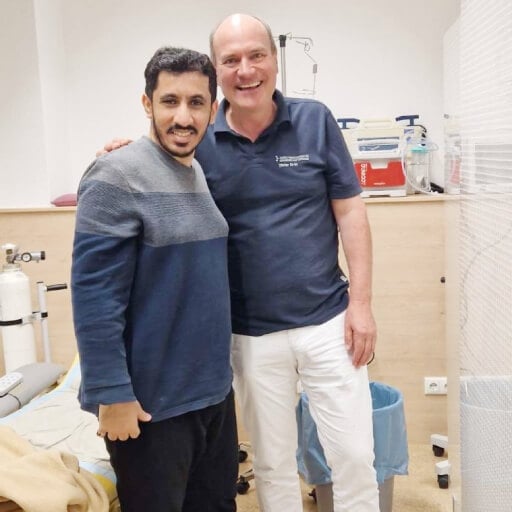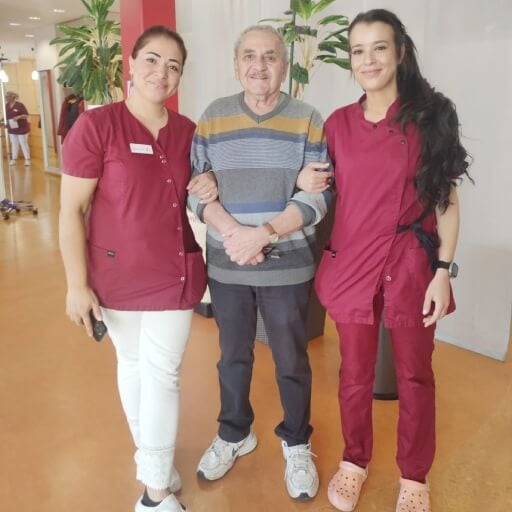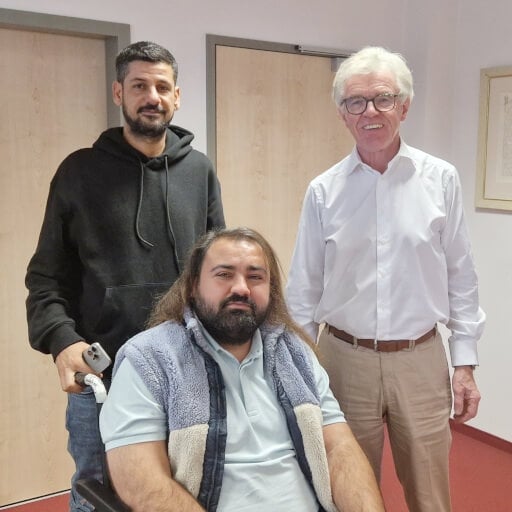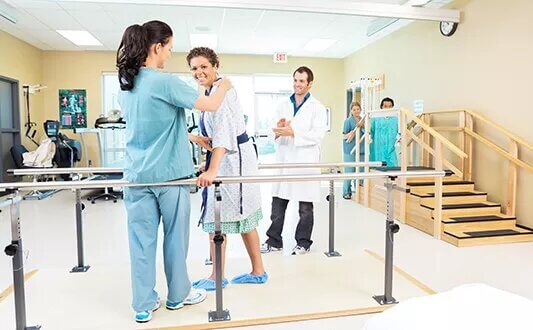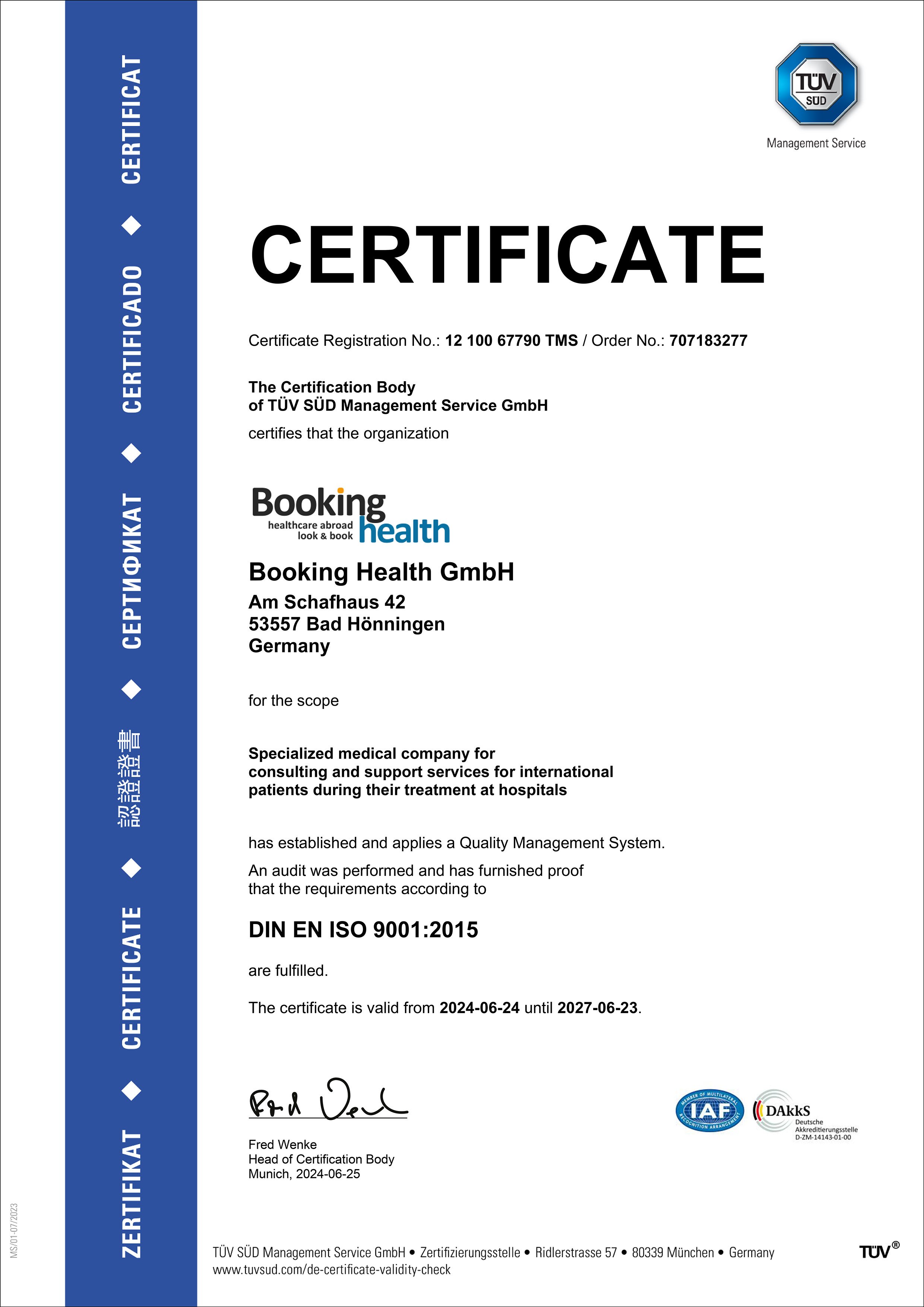Parkinson's disease is a chronic, progressive neurodegenerative disorder that primarily affects movement. It occurs when dopaminergic neurons in the substantia nigra – a region of the brain responsible for coordinating motor control – begin to deteriorate. This leads to symptoms such as tremors, muscle rigidity, bradykinesia (slowness of movement), and postural instability. Non-motor symptoms, including sleep disturbances, depression, and cognitive decline, may also develop as the disease advances. [1]
Globally, Parkinson's disease affects more than 10 million people, with incidence increasing significantly with age [2]. According to the World Health Organization [3], the number of cases has doubled over the past 25 years, making it one of the fastest-growing neurological conditions worldwide.
While there is currently no cure for Parkinson's disease, and conventional medications, such as levodopa, only manage symptoms temporarily, researchers are now focusing on regenerative approaches that may offer longer-term benefits. Among the newest treatments for Parkinson's disease, stem cell therapy is generating hope by targeting the root cause of dopamine loss. [1, 4]
Although still under clinical evaluation in many countries, Parkinson's and stem cell therapy are increasingly linked in medical literature as a promising avenue [4]. Today, with early diagnosis, comprehensive care, and access to advanced therapies, it is possible to significantly slow progression and improve quality of life for individuals living with this challenging condition.
What Is Stem Cell Therapy for Parkinson's Disease?
Stem cell therapy for Parkinson's is an innovative regenerative approach that aims to replace the dopamine-producing neurons lost due to the disease. Unlike conventional medications, which only alleviate symptoms temporarily, stem cell therapy targets the underlying neurodegeneration, offering a more lasting therapeutic strategy. [4]
As mentioned above, in Parkinson's, the degeneration of dopaminergic neurons in the substantia nigra leads to impaired motor and non-motor functions. For Parkinson's disease, stem cell therapies aim to restore this lost function by implanting healthy cells capable of producing dopamine. In certain protocols, this approach is also referred to as a stem cell transplant for Parkinson's, especially when cells are directly delivered to the affected brain regions. [4]
Types of Stem Cells Used in Parkinson's Therapy
- Embryonic Stem Cells (ESCs): Pluripotent cells that can become any cell type, including dopamine neurons.
- Induced Pluripotent Stem Cells (iPSCs): Adult cells genetically reprogrammed to behave like embryonic cells. They avoid ethical concerns and are often patient-specific.
- Mesenchymal Stem Cells (MSCs): Found in bone marrow or fat tissue; may offer neuroprotective and anti-inflammatory effects rather than direct dopamine replacement.
Medical Professional Perspectives – What Doctors Say About Stem Cell Therapy for Parkinson's Disease
Dr. Siebenhüner, a physician with over 40 years of clinical experience and nearly two decades working with regenerative medicine, is a leading voice in the field of stem cell therapy for Parkinson's in Germany. In his interview, he emphasizes the regenerative potential of stem cells to restore tissues that have lost function, particularly in neurodegenerative and age-related diseases.
He explains: "Stem cells are regenerative cells… If tissues do not work properly, stem cells can be used to restore them."
Dr. Siebenhüner stresses that stem cell treatment for Parkinson's disease is most effective when combined with classical therapies, and that every case must be assessed individually to determine optimal outcomes. Germany's progressive approach, supported by clinical safety protocols, continues to attract international patients seeking this newest treatment for Parkinson's disease and personalized care.
"40 Years of Medical Excellence": Leading German Expert Dr. Siebenhüner on Stem Cell Therapy
Clinical Outcomes – Statistics and Success Rates of Stem Cell Therapy for Parkinson Disease
Recent studies from leading research centers in Japan and Europe confirm that stem cell therapy for Parkinson's disease can offer measurable improvements in both motor and daily living functions.
For example, in a Phase I/II trial conducted in Kyoto, patients who received iPSC-derived dopaminergic progenitors demonstrated a 20.4% reduction in motor symptoms (UPDRS-III OFF-stage) and 35.7% improvement during ON-stage assessments, all without serious adverse events. [5]
Complementing this, a meta-analysis of 10 clinical studies involving 120 patients reported an average 14-point improvement in motor function and a 5.7-point gain in daily living abilities (UPDRS-II). These results highlight a consistent trend across trials – approximately 60-70% of patients respond positively to therapy, particularly in early and mid-stage Parkinson's. [6]
Quality of life scores, as measured by the PDQ‑39 index, also improved significantly in patients treated with autologous or pluripotent-derived stem cells, reinforcing the potential of this therapy as one of the newest Parkinson's treatments aimed at long-term symptom management and functional recovery. [7]
As clinical trials expand, more patients are gaining access to both stem cell transplants for Parkinson's and broader integrative protocols that reflect the evolving relationship between stem cell therapy and Parkinson's research. However, the findings discussed above support the growing consensus that stem cell therapy for Parkinson's offers an encouraging pathway for improving patient outcomes beyond what traditional drug-based regimens can provide.
| Outcome | Baseline/Before | After (~ 6-24 Months) | Improvement |
|---|---|---|---|
| UPDRS-III (OFF-stage motor function) | - | -9.5 pts (20.4% decrease) | Improved motor control |
| UPDRS-III (ON-stage motor function) | - | -4.3 pts (35.7% decrease) | Sustained benefit with levodopa |
| UPDRS-III (motor) | - | -14 pts (avg.) | Motor symptoms relief |
| UPDRS-II (daily living activities) | - | -5.7 pts (avg.) | Improved ADL scores |
| PDQ-39 (quality of life index) | ~76 (baseline) | ~60 | ~20% improvement |
| Response rate to therapy | - | ~60-70% | Majority show benefit |
| Serious adverse events | - | None reported | High safety profile |
Note: The Unified Parkinson's Disease Rating Scale (UPDRS) is a widely used tool to assess the severity and progression of Parkinson's disease. It includes several sections:
- UPDRS-II evaluates Activities of Daily Living (ADL) such as feeding, dressing, hygiene, handwriting, and walking. It reflects how Parkinson's affects the patient's day-to-day independence.
- UPDRS-III assesses motor skills, including speech, facial expression, tremor, rigidity, and gait. It is one of the most important indicators in clinical trials.
- OFF-stage scores reflect the patient's condition when the effect of Parkinson's medication has worn off (typically after a medication break), revealing the worst functional state.
- ON-stage scores reflect the patient's performance when medication is active, showing the best possible state under current therapy.
- The PDQ-39 (Parkinson's Disease Questionnaire-39) is a quality of life questionnaire covering eight domains such as mobility, emotional well-being, stigma, social support, and bodily discomfort. A lower score indicates a better quality of life.
Patient Story: Michael's Experience of Stem Cell Therapy for Parkinson Disease
Michael, a retired architect from Toronto, was diagnosed with Parkinson's disease at age 58. At first, his symptoms were mild – a slight tremor in his right hand and occasional stiffness. However, over the next four years, his condition worsened. Daily tasks like brushing his teeth or tying his shoes became exhausting challenges. Medications brought some relief, but their effects began to wear off quickly, and the side effects made him feel dizzy and weak.
"I was afraid of becoming completely dependent on others. That was my biggest fear," Michael recalls.
When his neurologist mentioned that clinical trials were being conducted abroad, Michael and his wife began searching for options and discovered Booking Health, a medical travel platform specializing in advanced treatments in Germany. After submitting his records, Booking Health arranged everything – from his visa to an appointment with a leading stem cell therapy clinic in Frankfurt.
Michael underwent stem cell therapy for Parkinson's in Germany, where mesenchymal stem cells were harvested from his own adipose tissue, processed, and reintroduced intravenously. The treatment was minimally invasive and well tolerated.
"The staff was kind, the doctors explained everything thoroughly, and Booking Health was with us every step of the way," says Michael.
Within three months of treatment, Michael noticed a major difference. His hand tremor decreased significantly, his gait became more stable, and he regained the confidence to go on morning walks again.
"I won't say I'm cured. But I feel like I got my life back. Even my grandchildren noticed the change."
Now, a year later, Michael continues to receive follow-up care remotely and is planning a second round of therapy.
Stem Cell Therapy: Patient Stories with Booking Health
A Medical Journey: Every Step of the Way With Booking Health
A diagnosis of Parkinson's disease can feel overwhelming. The progressive nature of the condition and the gradual loss of independence can create fear, frustration, and even hopelessness – especially when traditional therapies no longer bring meaningful relief. However, today, there is real hope. Medical science is advancing rapidly, and patients now have access to treatment options that were unthinkable just a few years ago.
One such innovation is stem cell therapy – a regenerative approach that targets the root cause of Parkinson's by helping restore dopamine-producing neurons. This therapy is already improving motor function, reducing tremors, and enhancing quality of life for many patients. With fewer side effects than conventional medications, stem cell therapy is gaining recognition as a promising path for long-term symptom control.
To make an informed choice and receive a treatment plan tailored to your clinical condition, trust the experts at Booking Health. With over 12 years of experience in organizing treatment abroad, we connect patients to top German clinics offering advanced care for Parkinson's disease. We handle every aspect of your journey to ensure a stress-free experience.
We provide:
- Thorough assessment and analysis of your medical records
- Development of a personalized treatment program
- Selection of the most suitable clinic and leading specialists in stem cell therapy
- Preparation and translation of medical documents
- Pre-treatment consultations with German doctors
- Expert support during the hospital stay
- Post-treatment follow-up care recommendations
- Coordination of your travel, including visa support and airport transfers
- A dedicated personal coordinator and interpreter with 24/7 assistance
- Transparent budgeting and no hidden costs
Health is invaluable. When dealing with a complex diagnosis like Parkinson's disease, you deserve support from professionals with proven expertise. Booking Health is your reliable partner, guiding you toward advanced, individualized treatment options that can improve not just your symptoms – but your life.
Submit a request today to learn more about stem cell therapy for Parkinson's in Germany and receive a personalized treatment plan from world-class experts.
Frequently Asked Questions About Stem Cell Therapy for Parkinson’s Disease
Send request for treatmentStem cell therapy for Parkinson's is an advanced treatment that uses regenerative cells to replace or repair dopamine-producing neurons damaged by the disease. It aims to go beyond symptom management and address the neurological root cause of Parkinson's.
Stem cells can develop into functional dopamine neurons, which are essential for motor control. By transplanting them into affected brain areas, this therapy supports neuroregeneration and helps restore communication between nerve cells – key in reducing symptoms.
Currently, stem cell therapy cannot cure Parkinson's disease. However, it offers meaningful improvements in symptom control, mobility, and quality of life. It is considered one of the newest Parkinson's treatments with long-term potential.
Clinical studies report that more than 65% of patients show moderate to significant improvement in motor function within 6-12 months of treatment. When paired with conventional therapies, the results can be even more impactful.
Like any medical procedure, there are potential risks. These may include inflammation at the injection site, immune response, or temporary fatigue. However, most patients tolerate stem cell therapy for Parkinson's well, especially when cells are autologous (from the patient's own body).
The effects vary from patient to patient. Some experience benefits for several months, while others report sustained improvements for over a year. How long results last depends on the individual's condition, the stem cell type used, and the overall treatment plan.
The success rate of stem cell therapy for Parkinson's varies by case and protocol. In controlled studies, significant symptom relief is achieved in the majority of patients, especially in early to mid-stage disease. Long-term outcome data are still being collected.
Yes, emerging evidence suggests that stem cell therapy can slow the progression by replacing dying neurons and promoting the health of remaining cells. This sets it apart from symptomatic treatments that don't alter disease progression.
The cost of stem cell therapy for Parkinson's disease in Germany typically starts at €20,550. This includes the procedure, diagnostics, physician consultations, and short-term hospital stay. Booking Health provides detailed quotes and full-service coordination.
Yes, stem cell therapy for Parkinson's in Germany is available to international patients. Clinics offer advanced technologies, multilingual staff, and personalized care plans. Booking Health can arrange everything from medical appointments to travel logistics.
Choose treatment abroad and you will for sure get the best results!
Authors:
This article was edited by medical experts, board-certified doctors Dr. Nadezhda Ivanisova, and Dr. Bohdan Mykhalniuk. For the treatment of the conditions referred to in the article, you must consult a doctor; the information in the article is not intended for self-medication!
Our editorial policy, which details our commitment to accuracy and transparency, is available here. Click this link to review our policies.
Sources:
[1] National Institute of Neurological Disorders and Stroke. Parkinson's Disease. https://www.ninds.nih.gov/health-information/disorders/parkinsons-disease
[2] BMJ. Projections for Prevalence of Parkinson's Disease and Its Driving Factors in 195 Countries and Territories to 2050: Modelling Study of Global Burden of Disease Study 2021. https://www.bmj.com/content/388/bmj-2024-080952
[3] World Health Organization. Launch of WHO's Parkinson Disease Technical Brief. https://www.who.int/news/item/14-06-2022-launch-of-who-s-parkinson-disease-technical-brief
[4] Inflammation and Regeneration. Cell Therapy for Parkinson's Disease with Induced Pluripotent Stem Cells. https://inflammregen.biomedcentral.com/articles/10.1186/s41232-023-00269-3
[5] Nature. Phase I/II Trial of iPS-Cell-Derived Dopaminergic Cells for Parkinson's Disease. https://www.nature.com/articles/s41586-025-08700-0
[6] Frontiers in Human Neuroscience. Safety and Efficacy of Cell Transplantation on Improving Motor Symptoms in Patients With Parkinson's Disease: A Meta-Analysis. https://www.frontiersin.org/journals/human-neuroscience/articles/10.3389/fnhum.2022.849069/full
[7] Biomedical Research and Therapy. Effectiveness of Platelet-Rich Plasma and Peripheral Blood-Derived Very Small Embryonic-Like Stem Cells in Parkinson's Disease Management. https://bmrat.org/index.php/BMRAT/article/view/966
Read:
Article menu:
- What Is Stem Cell Therapy for Parkinson's Disease?
- Clinical Outcomes – Statistics and Success Rates of Stem Cell Therapy for Parkinson Disease
- Patient Story: Michael's Experience of Stem Cell Therapy for Parkinson Disease
- A Medical Journey: Every Step of the Way With Booking Health
- Frequently Asked Questions About Stem Cell Therapy for Parkinson’s Disease
Don't know where to start?
Contact Booking Health
